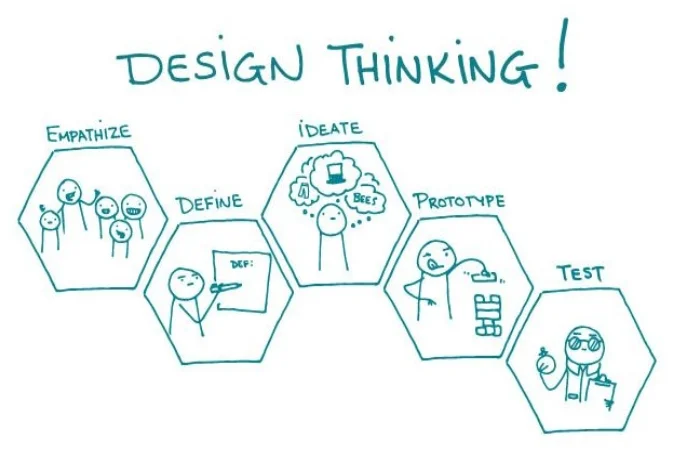Hardest Marketing Challenges – If you ever connect with a UX designer, tell them what work you do for a living. This isn’t necessary since UX design is fascinating. However, I’m biased. It’s because, unlike other occupations, UX designers nearly always have an idiosyncratic and evolving description of the position they have. The reason for this isn’t because UX designers are naturally able to have divergent views about what UX design is about, but because UX design can be applied to do a myriad of things.
If you inquire with a UX designer to describe their work, you’ll likely hear a lot of buzzwords (user research testing, usability, A/B testing prototyping, iteration, and accessibility). However, a unifying theme is at the foundation of every successful UX designer’s work. Also, this isn’t always included in the brief description of their job that helps in solving complex issues with the user in mind. Now, let’s cherish the in-depth knowledge of design thinking ideas in the easiest way.
Table of Contents
How can Design Thinking assist you?
At this moment, you might be thinking, “But, wait, I don’t do design!” Don’t worry! The process of design thinking is applicable to an extensive range of scenarios. Even if your core field is not designing, design thinking will still help you in numerous aspects.
Let’s take a look at a marketing scenario as an example. Imagine you’re trying to sell a brand new product. You have an understanding of the target market but don’t know which way to get them. The best method to reach the person you want to achieve is to penetrate their head. You should be able to relate to them, find out who they are as well as what they do and what they’d like, and, consequently, you’ll know how to connect with them. This is the beginning of design thinking.
After identifying your target market, you must begin investigating as many avenues to reach them as you can. After you have identified the most effective concepts, you must test your ideas. The tests you take may produce great results. However, you’ll be able to take the lessons learned from each test and apply them to your subsequent tests.
Once you discover a method to reach your intended public, you will be able to apply design thinking. Another benefit is that you’ll be able to adjust to the changing needs of your audience as well as the media and technology you use for reaching them. Design thinking promotes learning through failing, constant iteration, and ad-hoc adaptation.

The Process of Design Thinking
We’ve now covered the concept of design thinking and how it can be beneficial for you. Let’s chat about how you can apply the elements of the design thinking process. Also, this training through a design thinking online course can be done in the best manner.
Part 1: Understand
The only accurate method to know what users feel while using your product is to penetrate their minds. No, it is not necessary to be psychic to do this. The most crucial point to consider in this regard is that you don’t quite know exactly what your issue is prior to talking to your audience. It is possible that you recognize something wrong and the results of the problem. The only way to fully comprehend the issue you’re trying to resolve is to talk with the people experiencing the issue.
Step 1: Empathize
To gain access to your customer’s mind, you must do thorough research. It is essential to know the things they think, feel, and say. The only way to achieve this is to talk about them, observe them, and let go of any beliefs you might have regarding them.
There are numerous different methods you can use when narrating your research. User interviews, observation, task analysis, and empathy mapping are only the most common.
Step 2: Define
After completing your research, gather data and findings for analysis. The best technique is to put all your results openly. Use whiteboards, sticky notes, or any other tool you can find to review all your findings in one go. When you do this, you’ll be able to identify patterns and similarities.
Part 2: Explore
Once you’ve defined the problem or issues, you can further move to the exploration portion in the process of design thinking. At this point, you’re looking at possible solutions.
Step 3: Ideate
Now is the time to be creative. In the initial phase of brainstorming, you must find as many possible solutions to your issue as you can. Explore the possibilities outside of your box! Crazy ideas might bring great results, and the more creative, the better you will be able to perform.
It is crucial to remain open-minded when you think about it. There is nothing that is a good idea at this phase. The aim is to think of numerous feasible solutions and think about the issue in as many ways as possible. You never know what might result in a successful resolution.
An excellent method to try as many ideas as feasible is to play Crazy Eights. With Crazy Eights, the goal is to find as many solutions as possible within the shortest amount of time. Any idea is not a bad idea, so whatever you think of, just go for it. For this, you divide a piece of paper into 8 parts and then spend 8 minutes (one minute for each square) sketching out and explaining an idea for a solution. After the time’s up, you are ready to move on to the next concept.
Step 4: Prototype
After considering as many options as possible, it’s time to work on your most effective solution and build an initial prototype. The goal of prototyping is to develop a prototype of your proposed solution, which you can later test.
Never worry about how complete the design of your prototyping is. If you’re doing it right, you’ll end up working on your initial version in the end!
Part 3: Materialize
After you’ve constructed your first prototype, you’re able to begin to assess whether it’s a feasible option. This involves testing and repeating the procedure.
Step 5: Test
It is the next stage of testing your prototype. Keep in mind that mistakes are equally crucial to your victories. The purpose of designing and testing your prototype is to fail frequently and to fail quickly. Also, it’s essential to learn the lessons from your mistakes and apply them to your next project. You must test small and big, both adjustments.
The Conclusion
The process of design thinking isn’t only useful for UX designers; it can be helpful to anyone. Making a website, a product, a business, or something else requires time and effort when it’s done correctly. This 5 step process will help you solve your most complex marketing challenges. However, we always suggest following the entire process step by step without skipping any element.
As you know, universities such as Stanford provide the best training to master design thinking, so it’s worth enrolling in the Stanford design thinking course. There will be failures and failures, but that’s a great thing to learn. Test the method, learn through your failures, improve upon them, and develop as an individual and a business.

